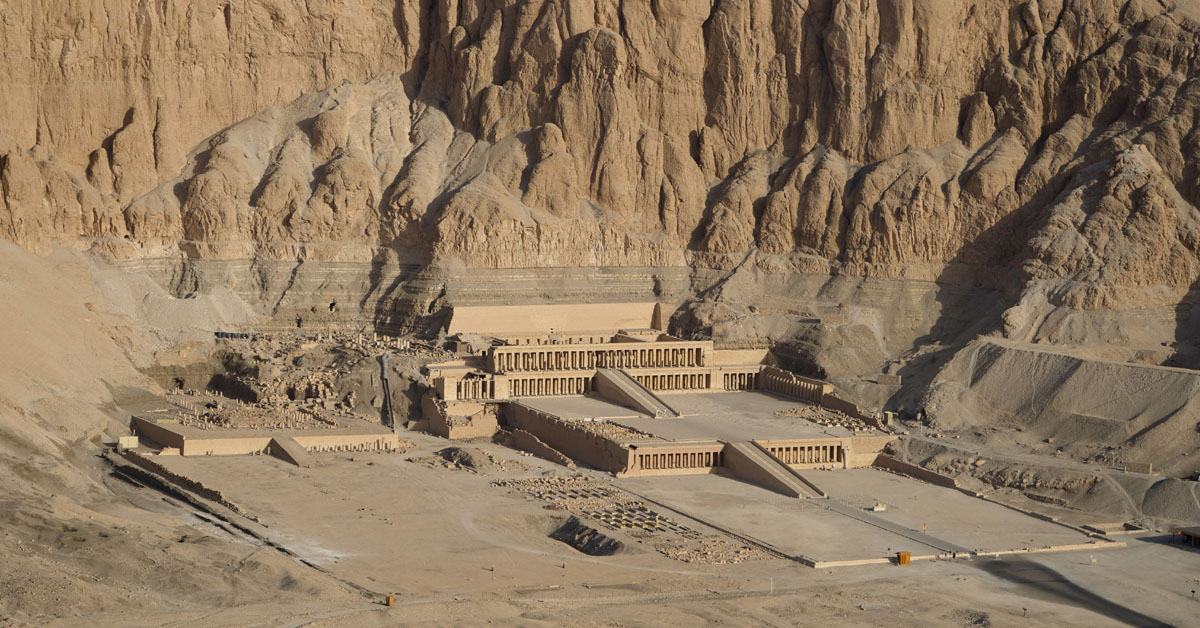7 Must-See UNESCO Sites In Egypt
3 min read
Egypt is home to some of the world’s most iconic UNESCO World Heritage Sites – from the pyramids at Giza to the souqs of Islamic Cairo.
Egypt has a total of 7 UNESCO World Heritage Sites, or places deemed important to humanity’s cultural or natural heritage.
But Egypt also has some incredible UNESCO sites that you’ve probably never heard of! And these lesser-known sites are hidden gems for nature lovers and history buffs.
So what are the 7 must-see UNESCO sites in Egypt?
I’m an expat living for more than a decade in Egypt and I’ve explored many UNESCO sites across the country. And this is my ultimate guide to exploring these heritage sites – along with my local’s insider tips.
1. Abu Mena
Abu Mena is a 4th-century Coptic holy city – about 50 kilometers from modern-day Alexandria – that includes churches, a basilica and mosaics that tell the story of Egypt’s early Christians.
Abu Mena was built around the tomb of the Coptic Saint Menas of Alexandria, a soldier in the Roman army martyred when he refused to renounce his faith. Abu Mena was a pilgrimage site in antiquity and remains important to Egypt’s Coptic community.
Today Abu Mena is an archeological site where you can see the remains of churches, a baptistery, basillica, monastary and bathhouse that give insight into Coptic history.
Abu Mena was once on the endangered list because rising waters threatened the soil and the stability of the monuments. But the bases of the important structures have now been reinforced.
But although the site is mostly in ruins, there are still some beautifully-preserved pieces that are worth a day trip from Alexandria for history buffs and religious tourist.
2. Ancient Thebes with its Necropolis
Ancient Thebes is now modern-day Luxor – and it’s packed with majestic Ancient Egyptian temples, mortuaries and tombs that make up a vast open-air museum.
Luxor is an absolute must-see on any Egypt itinerary. And the UNESCO list includes gems like Karnak Temple, where the sun god was worshipped for centuries, and Luxor Temple, where the pharaohs were crowned.
Other sites include Hatshepsut’s Mortuary Temple built by one of the rare female pharaohs.
And then there’s the splendid Valley of the Kings with its underground tombs still vivid after centuries with colorful paintings and hieroglyphs (including the famous Tomb of Tutankhamun).
3. Historic Cairo
Historic Cairo is a vast maze of souqs, medieval mosques, madrasas and splendid minarets that holds some of the world’s greatest treasures of Islamic architecture.
Historic Cairo includes Khan el Khalili, the bustling souq with its narrow alleys packed with shops offering silver jewelry, alabaster vases, brass lanterns, scarves, spices, frankincense and more.
Moez Street is the district’s most famous street – and the main medieval thoroughfare through the historic district. It’s lined with Ottoman-era homes with elaborate mashrabiyas, lively cafes and ancient gates like Bab al-Ghuri where merchants have haggled for generations. This part of town is home to several of Egypt’s most beautiful mosques.
Historic Cairo is vast – and it also includes Coptic Cairo with its dazzling Hanging Church and Abu Serga, where it’s believed the Holy Family took refuge on their flight into Egypt.
The City of the Dead is also part of this vast UNESCO site with its medieval Mamluk mosques and tombs.
4. Memphis and its Necropolis – the Pyramid Fields from Giza to Dahshur
The famous pyramids of Giza need no introduction – and they’re one of the most widely recognizable landmarks on the UNESCO World Heritage list.
Surrounded by the crowded city of Giza, the pyramids and the Great Sphinx are the only remaining natural wonder of the ancient world. These Old Kingdom masterpieces were built beween 2600 – 2500 BCE and they are truly breathtaking in real life.
But did you know the pyramid fields include more than 38 different pyramids?
Sites like the Step Pyramid at Saqqara and the Bent Pyramid at Dahshur are the earlier, imperfect attempts of the ancient builders before they mastered the art of pyramid building with the polished pyramids of Giza.



